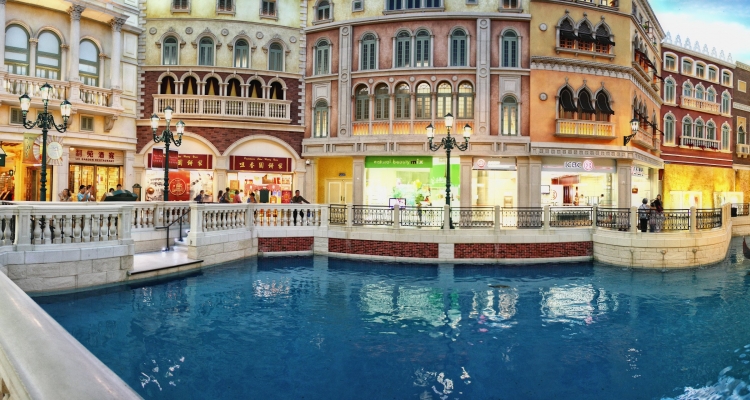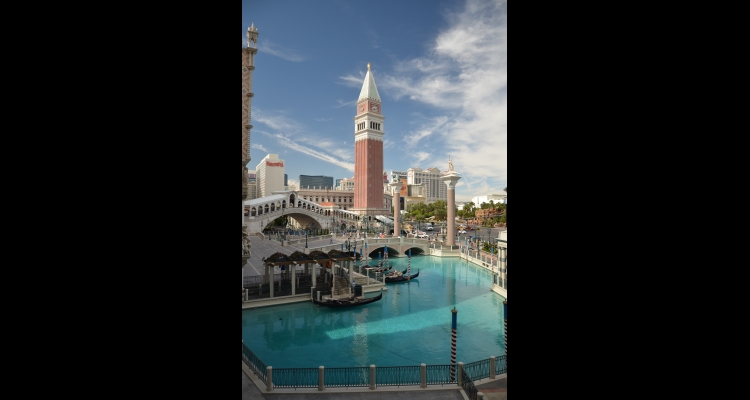Venetian Resort Hotel Casino
In 1999, The Venetian replaced the imploded Sands on the Las Vegas Strip. Its builder, Sheldon Adelson, proved both controversial and visionary, battling contractors and unions while building a major megaresort that became the basis of a gaming empire.
In 1996, after imploding the Sands, Adelson used first mortgage notes and bonds from Wall Street firms and his Strip property as additional collateral to begin construction of the first phase of the Venetian, which was set to cost a then-staggering $1.5 billion. The blueprints reflected Adelson's desire for eleven million square feet of space; the space would be comprised of a thirty-five-story hotel tower in which each of the 3,036 guest rooms were designed as suites; a casino with 113,000 square feet; and a half-million square feet for retail shops. To approximate Venice, Italy, Adelson ordered expensively detailed renderings of the Doge's Palace, Rialto Bridge, and Campanile tower. The second construction phase would have another 3,036 suite-rooms, the same amount of casino and retail space as in phase one, and 500,000 square feet of space for meetings.
But the strong-willed Adelson met with controversy when the first phase of the Venetian opened in May 1999, before all of its rooms, shops, and other services were ready for business. Adelson blamed the hotel's builder and sued. The builder countersued. Dozens of subcontractors complained loudly that Adelson failed to pay them for millions of dollars worth of work. Meanwhile, Adelson prevented the Culinary Union Local 226, which represented nearly all of the hotel, restaurant, and bar workers in major Strip hotels, from organizing at the Venetian.
With the builder and subcontractor lawsuits eventually settled, Adelson managed to open the Venetian's second phase, the Lido Tower, in 2002. Adelson's Venetian ushered in many significant changes that altered how Strip casinos do business. The Sands Expo Center encouraged many conventioneers to travel to Las Vegas in mid-week, resulting in the expansion of the non-gaming business among people who tend to gamble far less than tourists. Adelson took a chance and raised the bar by charging $250 a night for hotel rooms, and brought in celebrity chef-owned, expensive restaurants. Conventioneers and other visitors were willing to pay for higher-price rooms and gourmet food. Other Strip casinos followed the trend and their revenues for rooms, food and retail, for the first time, out-earned what the casinos brought in.
Article Locations
Related Articles
None at this time.

